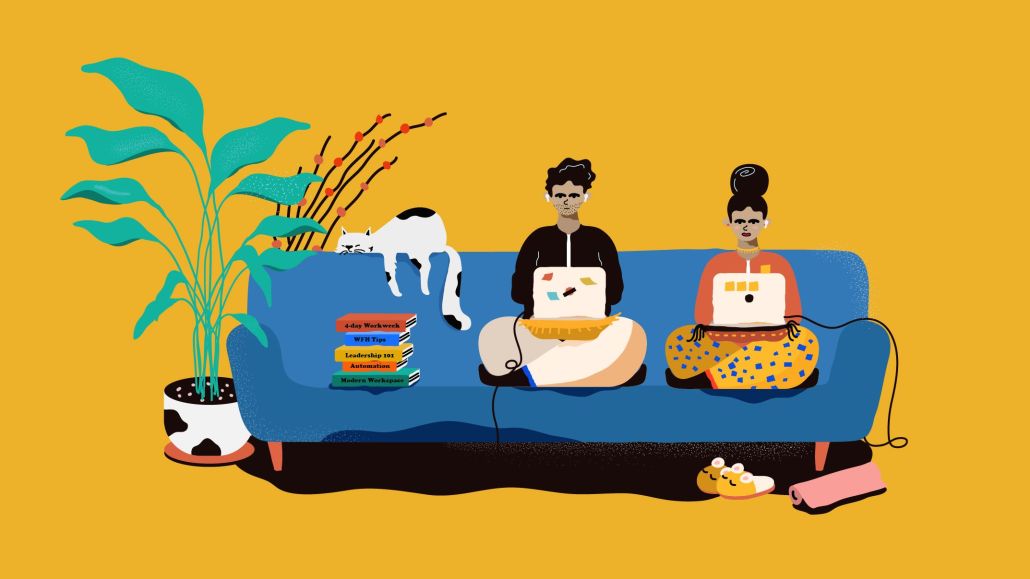Save 50% on a 3-month Digiday+ membership. Ends Dec 5.
To get the attention of millennials and Gen Z, Ace Hardware is turning to influencers

Ace Hardware is adding a paid and organic influencer strategy to its marketing mix. The nearly 100-year-old hardware retailer is new to the space and looking to get the attention of millennial and Gen Z consumers, particularly first-time home buyers, by working with do-it-yourself influencers.
“Influencers are relatively recent to us but they’re becoming more and more important,” said Jeff Gooding, vp of marketing at Ace Hardware. “They’re speaking the same language [as the audience we hope to reach] that the brand doesn’t speak.”
Most recently, the company worked with four DIY influencers — Kelsey and Ryan Mansingh (@newbuild_newlyweds), Kristine Abram (@homewithkrissy), Melissa Tyler (@lakeandlumber) and Angel Dooley (@massachusettsmama) — as part of the promotion of its new brand holiday, “SomeDay,” that aims to inspire people to take household projects they’ve put off and actually accomplish them. The influencers tackled the home projects they delayed, i.e. painting a hallway or a kid’s room, by working with Ace and posted content to their TikTok and Instagram channels documenting the process of doing so.
Currently, the brand is taking an organic approach to its own content and that from influencers on their respective social channels but may put paid behind it to amplify the content, per Gooding. It’s unclear what the brand spent on influencers or what percentage of the media budget is dedicated to influencers as Gooding declined to share specifics. He did say it was “not a very large budget overall for the entire [SomeDay] program.”
“The value is far beyond what we’ve spent on it,” said Gooding. “It’s a fraction of what we spend on TV, that’s for sure.”
Over the course of 2020, Ace Hardware spent $85.3 million on media placements, per Kantar’s data. In January 2021, the company spent $292,000 on media, down from $1.1 million in January 2020, according to Kantar. Those figures don’t include spending for media placement on social platforms as Kantar doesn’t track that.
Working with influencers allows the brand to make content that “doesn’t feel like an ad,” explained Tom O’Keefe, CEO of O’Keefe Reinhard & Paul, the creative agency behind the SomeDay campaign. “Influencers are the ones experiencing procrastination [of their home projects],” said O’Keefe. “They’re the DIY voice right now.”
Ad position: web_incontent_pos1
DIY influencers can be more costly than other influencers, explained Danielle Wiley, CEO of influencer marketing shop Sway Group, adding that nano influencers can cost roughly double what they normally would and that brands can pay anywhere between 10%-100% more for DIY influencers than other influencers. “If you’re putting together a custom DIY project that’s more work than just a post,” said Wiley.
It’s becoming more and more common for older brands like Ace to add influencers to their marketing mix, Wiley said. “Brands need content for so many platforms today,” said Wiley. “It’s impossible for brands to keep up with that without outsourcing some to influencers. It’s the cost of doing business now to pull in an influencer to keep up with [the] volume of content expected.”
That’s certainly the case for Ace as the retailer is “developing a lot more content than we have in the past” to “bolster our social media properties,” said Gooding.
As for influencers going forward, as Ace “develops more PR activation ideas influencers are part of that,” said Gooding. “As we go into social strategy beyond that we’ll certainly be looking at that more.”
More in Marketing

Ulta, Best Buy and Adidas dominate AI holiday shopping mentions
The brands that are seeing the biggest boost from this shift in consumer behavior are some of the biggest retailers.

U.K. retailer Boots leads brand efforts to invest in ad creative’s data layer
For media dollars to make an impact, brands need ad creative that actually hits. More CMOs are investing in pre- and post-flight measurement.

‘AI is permeating everything we do’: How Guitar Center developed 2 AI tools this year
This summer, the company launched a chatbot called Rig Advisor to help customers find the right instruments and products.
Ad position: web_bfu



